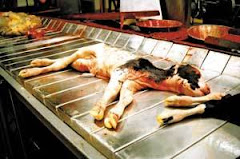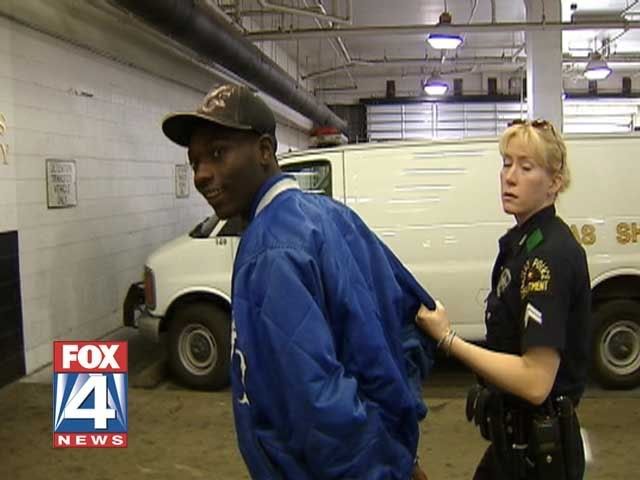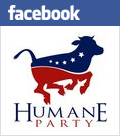From: Moonwarriors2
Date: May 20, 2009 9:08 PM
Subject: DNA LIST-DEALERS WHO BUY COMPANION ANIMALS FOR RESEARCH
Dear Friends,
Dogs Best Friend,
Kai Han
Operations Manager
Ace of Hearts Dog Rescue
T: 310-358-3344
www.aceofheartsdogs.com
San Diego Animal Support Foundation www.sdshelters.com
TV PET SEGMENTS: http://www.sdshelters.com/news/MoreTVPets.html
Elliot Rover's Ride 4 Life Medical Fund
http://sdshelters.com/Ride4Life.html
************************************************************
DNA - CALIFORNIA DEALERS WHO CAN BUY ANIMALS AND SELL TO RESEARCH - from larger list found at
http://www.aphis.usda.gov/animal_welfare/efoia/downloads/reports/B_cert_holders.txt in April 2009.
IN SAN DIEGO COUNTY
California G.M.K. Bio Services, L.L.C 1155 Camino Del Mar, # 506 Del Mar 92014
California Robert Sargeant 655 Ash Street Ramona 92065
California Scantibodies Laboratories, Inc. 9336 Abraham Way Santee 92071
California Yates, Kevin Animal Educators P. O. Box 1675 Valley Center 92082
IN COUNTIES CLOSE TO SAN DIEGO
California Bayou Aquatic & Reptile Supply 1908 South Lake Place Ontario 91761
California Chemicon International, Inc. 28820 Single Oak Drive Temecula 92590
California International Immunology Corporation 25549 Adams Avenue Murrieta 92562
California Pet Partners Barneys Pets & Supplies 450 N. Sheridan Road Corona 92880
IN THE LOS ANGELES AREA
California Beckman Coulter, Inc. 200 South Kraemer Blvd. Brea 92821
California Kelly, Lynn Kellys 527 North Azusa Avenue, #274 Covina 91722
California Moore, Timothy John & Sue Ann I.F.P.S. 175 East Street Norco 92860
California Quality Pets Of California, Inc. 16612 South Broadway Gardena 90248
California Sargeants Wholesale Biologicals 4900 Lisa Marie Court Bakersfield 93313
IN NORTHERN CALIF
ca
California Antibodies, Inc. P. O. Box 1560 Davis 95617
California California Draft Horse & Equipment Sale 2000 East Four Creeks Visalia 93292
California Crowley, Angela & Charles San Joaquin Valley Fisheries 10400 East Princeton Ave Sanger93657
California Phoenix Pharmaceuticals, Inc. 330 Beach Road Burlingame 94010
California Primate Products, Inc. P.O. Box 620415 Woodside 94062
California Santa Cruz Biotechnology, Inc. 2145 Delaware Avenue Santa Cruz 95060
California Thompson, Jr., Allen California K-9 Auction Service 1506 Sproule Ave. Sacramento 95811
California Valley Biosystems P.O. Box 2216 West Sacramento 95691
California Wonderful World Pet Suppliers 25 Del Mar Circle Crocket 94525
Note To My Critics:
Wednesday, May 20, 2009
DEALERS WHO BUY COMPANION ANIMALS FOR RESEARCH
Posted by Denbeath at 11:18 PM 0 comments
Today Show covers Ringling cruelty case 5/20/09
From: Protect Animals
Date: May 20, 2009 10:35 PM
Subject: DawnWatch: Today Show covers Ringling cruelty case 5/20/09
The Court Case brought by various animal protection groups against Ringling Brothers for its treatment of elephants was covered today, Wednesday May 20, on NBC's Today Show. Reporter Natalie Morales did a good job of presenting a balanced view. She interviewed Ringling Brothers' Kenneth Feld and visited the breeding ground that the circus calls a conservation center, but she asked Feld some challenging questions while she was there. She also interviewed animal advocates. Most importantly, the segment showed some footage of animals being whacked with bullhooks and being chained in poor conditions.
Please watch it on line at:
http://today.msnbc.msn.com/id/26184891/vp/30843715#30843715
You can also read some of the text on the web site at:
http://today.msnbc.msn.com/id/30809719
While the piece isn't the straight out indictment of circus that animal advocates would like to see, it wasn't long ago that the only segments we saw on circuses were fluff promotional pieces, so we are getting somewhere.
At the bottom of the story there is a spot where you can rate it out of five -- please give it five stars. It is so important that mainstream shows learn that their audiences want to hear what is happening to the animals. The same area has a button to email the story. Please send it to all of your friends. They will learn about the current court case and the Today Show, which tracks the number of emails from its site, will be given another indication that animal abuse stories are important to their viewers. Then please click on "Discuss Story" and add a comment. Finally, thank the Today Show for the story. The Today Show takes comments at TODAY@nbcuni.com
You can find out more about the court case on the ASPCA website at:
http://www.aspca.org/fight-animal-cruelty/circus-cruelty.html
Yours and the animals',
Karen Dawn
Posted by Denbeath at 10:46 PM 0 comments
The Chemical Dumbing Down of Americans
http://www.youtube.com/watch?v=UXxlID-5-nQ
Posted by Denbeath at 10:07 AM 0 comments
Tuesday, May 19, 2009
Bow Hunting-A Veterinarian Perspective ( Sign Petition)

Bowhunting Report. Plus ,
Why there are too many deer a MUST READ
Please sign the Petition against the sadistic bowhunting.
Posted by Denbeath at 10:52 PM 1 comments
Labels: animal abuse, Animal Cruelty, Bow Hunting, hunting
do you know what's in your lipstick?
COW BRAINS IN YOUR LIPSTICK?/PROTEIN MEAL MADE FROMM DOGS & CATS
One Voice..
Are Cow Brains
Lurking in Your Lipstick?

You’re probably thinking, "I hope not!"—but how can you be sure?
The Food and Drug Administration recently told cosmetics makers to stop using the brains and spinal cord tissue from older cows in products like lipstick and hair spray in order to try to prevent the spread of mad cow disease to humans. Ready for the bad news? These same icky ingredients are "OK" if they come from cows younger than 30 months of age.
Cosmetics companies use animal ingredients such as tissue and tallow (fat) because they’re cheap, not because they’re better than plant-based or synthetic ingredients. Slaughterhouses kill billions of animals every year and have to dispose of the "byproducts" somehow; selling them to cosmetics manufacturers is one easy solution.
Unfortunately, even avid label-readers can’t always determine what they’re putting on—and in—their bodies. There are thousands of technical and patented names for ingredient variations, and many ingredients known by one name can be of animal, vegetable, or synthetic origin. And if that’s not confusing enough, some companies have slyly removed the word "animal"from their labels in order to avoid turning off consumers. For example, instead of saying "hydrolyzed animal protein," companies may use a term like "hydrolyzed collagen."
Cruelty Free Consumer
A cruelty free product means that no animal was burnt, blinded, cruelly confined, tortured, force fed poison, slaughtered or deprived of what is necessary to all living things in the making or testing of the product. For more and more people whether or not a product is cruelty free has become the determining factor in whether or not they will buy the product. This is a definite sign of progress and very welcome news for animals and animal lovers alike.

It may seem daunting at first when you first realize that you can no longer morally allow yourself to purchase any of your trusted and favorite brands. Once the initial shock wears off and you commit to becoming a cruelty free shopper, you will soon discover that becoming a cruelty free consumer in a world that is over run with animal tested products and people who are innocently unaware of the nature and reality of animal testing is not always easy.
Vegan products can mainly be found in health food stores. You can find a few at your local drugstore but the selection is usually limited to one or two products only.
Once you become a more confident and convinced cruelty free consumer, you can try asking the manager of your local drugstore to carry your favorite vegan products . Be sure to be specific about what the products are and why you would like for the store to carry it.
You can also buy vegan products online. There are many high quality vegan companies who can most easily be found online. For a comprehensive list of these companies, please visit the links.
Companies That Don't Test on Animals
Vegan Companies
After you get used to the new way of shopping and living that is 100% vegan and cruelty free you will be amazed that you were ever too busy or overwhelmed to buy cruelty free products and to begin your journey to becoming a vegan and 100% cruelty free you.
To be absolutely certain that you are buying a cruelty free product, please refer to the links on this page.
The Difference Between
Vegan and Cruelty Free

The label cruelty free does not mean that a product actually is. There is no legislation that deals with the labelling of beauty and health products. This means, for example, that a product can be labelled cruelty free even if the company tested every one of the ingredients on animals but didn't test the finished product. Cruelty free products can also contain animal products or use ingredients that were animal tested by other companies.
Vegan products contain no animal ingredients and are usually strict and specific about animal testing and using animal tested ingredients on their labels.
..There is a significant difference between a cruelty-free label and a vegan label. Vegan products adhere to cruelty-free standards, but in addition, these products don't contain any animal ingredients or animal byproducts. Many conventional beauty products, particularly cosmetics and shampoos, contain ingredients that are derived from animals or animal byproducts
If you're concerned that your beauty products aren't vegan and a telephone call to the company doesn't reveal whether an ingredient is animal-derived or not, PETA's Wesley suggests contacting an animal protection organization. They'll be able to provide you with the detailed ingredient information that makeup labels do not provide.
Here is a listing of some surprising animal ingredients to look for on cosmetic labels and some greener alternatives
Ingredient: Allantoin
Source/Use: Found in cows and other mammals and used as a healing agent in many cosmetic creams and lotions
Alternative: Allantoin is also found in many plants, particularly the extract of comfrey root.
Ingredient: Beeswax
Source/Use: Wax from virgin bees is used as a sealant in lipsticks, mascaras, eye creams, lip balms and nail whiteners
Alternative: Paraffin, vegetable oils and fats.
Ingredient: Boar bristles
Source/Use: Hair from boars commonly used in makeup brushes and toothbrushes
Alternative: Nylon or vegetable fibers.
Ingredient: Biotin
Source/Use: Found in all living cells and used in cosmetics and shampoos
Alternative: Plant sources.
Ingredient: Stearyl alcohol or sterols
Source/Use: A mixture of solid alcohols that may sometimes be prepared from sperm whale oil and is used in skin creams, hair rinses and some shampoos
Alternative: Vegetable stearic acid
Ingredient: Fish liver oil
Source/Use: A source of vitamin A sometimes used in cosmetics and hair dyes
Alternative: Vitamin A derivatives from carotene (carrots) or synthetic sources
Ingredient: Mink oil
Source/Use: An emollient used for its moisturizing properties in cosmetics and skin creams
Alternative: Vegetable/natural oils such as avocado, almond and jojoba
Ingredient: Silk/silk powder
Source/Use: The tiny fibers made by silk worms to form a cocoon -- used as a coloring ingredient ion face powders and soaps
Alternative: Milkweed seed-pod fibers or synthetic silks
Ingredient: RNA (Ribonucleic Acid)
Source/Use: Slaughterhouse waste that is commonly used in many protein-enriched shampoos and conditioners
Alternative: Plant cells
Ingredient: Sponge (luna and sea)
Source/Use: A sea animal that looks like a plant and is used as an ingredient for sponges and loofahs
Alternative: synthetic sponges
Ingredient: Stearic acid
Source/Use: Fat extracted from cows, sheep and pigs and used as a lubricant in deodorant, hair spray, shampoo and soap
Alternative: Vegetable fats or coconut
One Voice
Animal Rights Movement
DEAD DOGS AND CATS! SOILENT GREEN!
•JenJen™ loves all the Animals! {go vegan}
Vegan^v^Oddity(Lives In The Land Of Narrow Minds)
*Vegan* Voodoo Priestess
AWESOME VIDEO! DEAD DOGS AND CATS ARE MADE INTO PROTEIN COOKIES, MAKE UP, AND GELATIN. YOUR LIPSTICK, EVEN DESERT, IS MADE FROM DEAD THINGS. GUESS WHAT FOLKS-THIS HAPPENS IN THE UNITED STATES OF AMERICA WHICH MEANS SOYLENT GREEN HAS COME TRUE-NEXT THING YOU KNOW THE US GOVERNMENT WILL LEGALIZE HUMAN REMAINS TO BECOME PROTEIN FOOD!!! HairSalonMania
OFFICIAL~JUSTICE 4 BABYBOY PAGE~
SADDEST THING EVER
Posted by Denbeath at 10:29 PM 1 comments
Sunday, May 17, 2009
The Cove - The Japense Dolphin Slaughter
The Trailer:
http://www.opsociety.org/the-cove.htm
http://thecovemovie.com/
_____________________________
http://www.savejapandolphins.org/
_____________________________
http://www.seashepherd.org/dolphins/sea-shepherd-in-taiji.html
http://www.petitiononline.com/golfinho/
_______________________________________________
Posted by Denbeath at 12:39 PM 1 comments
Alleged Animal Shelter Abuses in Los Angeles
Reposted by:
ADVOCATE FOR SAVING DOGS
OVER 800 homeless pets are killed EVERY hour due to overpopulation. Please spay/neuter companion pets.
DONT LITTER, IT COSTS LIVES!
POSTED BY: Mama Kimberly ♥'s animals!
May 14, 2009
David Goldstein

LOS ANGELES (CBS) ― Animal Shelters are supposed to care for lost pets. But we found some LA County workers caught on tape allegedly abusing dogs. CBS 2 Investigative Reporter David Goldstein obained the videos and has this exclusive report.
These surveillance videos, obtained by CBS 2 News, show what some L.A. County animal shelter employees do when they think the public's not watching.
"How do you pull a defenseless dog through the facility like that, dragging it, and you have nothing to say at all."
We have the videos and obtained documents showing a hidden culture at the county shelters, where animals are allegedly euthanized and abused by employees, sometimes for kicks.
"There were quite a few of them who high-fived each other when they got certified to put the animals to sleep, as if it was a major coup."
L.A. County's Animal Care and Control claims to be one of the largest and progressive shelter systems in the nation. Their slogan is "care with compassion."
But our investigation found that is not always the case.
Animal control officers are watched from dozens of surveillance cameras set up all around the six shelters across L.A. County, watching them when no one else may be watching.
In a video from the backroom of the Downey shelter, an animal control officer is seen putting his foot on the dog he just brought in. While it's fully restrained on what is called a catch pole, he pins the dog down, jabbing the pole in its throat.
In this video from the Baldwin Park shelter last December, the officer drags the dog all the way down the long corridor, pulling it by a rope, as the animal spreads out on all fours. When he stops, the friendly dog wags its tail, only to be dragged along even further.
The day before in Baldwin Park, a camera catches another officer doing the exact same thing -- dragging a dog by a rope down a corridor.
In March at Baldwin Park an officer is seen flinging a Chihuahua into the cage. The tiny dog is tossed in like a piece of meat.
And finally in Baldwin Park in 2006, a dog is appears unsteady on its feet, having just come back from the vet with a hip injury. But that didn't stop the officer, who has been identified as Felix Reyes, from first pulling the dog, then dragging it by a rope.
As a family of five walks by, Reyes drags the dog across the compound.
After a short time, the dog finally succumbs to the pressure and gets up, only to have Reyes captured by another camera, as he walks it along and yanks the injured dog across the threshold and into a cage.
"Every animal has a story and they can't talk," said Cathy Nguyen.
Nguyen is an animal lover and frequent critic of the shelter system, who has troubled by the videos.
"The dog could be someone's dog. They didn't know. If this is how they treat my dog it wouldn't be acceptable," Nguyen said.
It was almost sadistic?
"Sadistic. Absolutely."
"Hey Felix, I'm David Goldstein with CBS 2 News."
I tried to question Reyes.
"You were pulling that defenseless dog down through the whole place. What were you doing that for?"
But he never said a word.
"How do you keep quiet about that? How do you live with yourself at night? You've got nothing to say?"
Critics of the shelter system say the videos bring to light the sometimes dark side of what goes on behind the cages, a culture that can breed cruelty, neglect and even torture.
These investigative reports, obtained by CBS 2 News, document dogs that were intentionally or mistakenly euthanized, killed in the shelters after being put on hold for adoption or the return to their owners.
"There were definitely people working there who didn't even like animals."
This former shelter employee, who would only talk if we concealed their identity, says the euthanizing of animals was sometimes a sought-after position.
"They enjoyed putting the animals to sleep?"
"Yes. Some of them volunteered. They wanted to be the ones doing that."
"What kind of person is that?"
"Narcissistic. Lack of compassion. It wasn't uncommon at all."
But the head of L.A. County's shelter system says three instances is just a small amount.
"We take in 90,000 animals a year, three incidents over the numbers of thousands of animals that have come in during that period of time I think is very minor."
Want to comment on this story? Join the discussion on our Facebook page: facebook.com/cbs2kcal9
__________________________________

_________________________________________
Posted by Denbeath at 11:30 AM 0 comments
Labels: animal abuse, animal abuse in the news, animal shelter abuse
If Animals Spoke Our Language
If Animals
Spoke our Language
Poem by: Vegan Poet

Animals speak to us in their own way,
but if they spoke with words, what would they say?
One thing I declare, without ANY doubt:
All creatures in cages would say 'Let me out!'
'Watch my eyes follow your every motion'
A dog would say, 'my life speaks of devotion'.
A horse would say, 'A fire burns deep within me
that yearns to run through the countryside, free!'

'You can be soft and cuddly, like I am'
illustrates an adorable little lamb.
'Soar with your thoughts like I soar through the sky,'
advises a wood pigeon gliding by.
Help, my mother's been shot' a fawn would cry,
who woefully witnessed her mother die.
She'd flee in fear to her cousins and brother,
'The scariest beast of all killed my mother.'
'Your blindness to bovines is an oddity,
for you see us as a mere commodity.
It's so sad; all the exploitation we've seen,
We are conscious beings treated like a machine.'
'Some scientists are really quite confused
seeking answers by primates being abused.
I, with eyes that greatly resemble yours,
see madness in some things that man explores.'

'I can't breathe or move; I'm living in hell!'
cries a chicken from her crowded prison cell.
'Humans inflict such excruciating pain',
With a hook in his mouth, a fish would explain.
One way we can improve the human race
is to respect those of a different face.
We need to listen in a whole new way
to what animals are trying to say.
Posted by: One Voice
Posted by Denbeath at 10:41 AM 0 comments
Friday, May 15, 2009
Planet Earth: Too Big To Fail

Hi Friends,
We are all doing our part to stop global warming. But world leaders are not. Greenpeace took bold action to push world leaders towards bold action to prevent run away climate change .

As representatives from the world’s 17 biggest global warming polluters met at the State Department in Washington, D.C. this morning, Greenpeace activists climbed a crane across the street to hang a banner with a picture of Earth and the message “Too Big to Fail.” The banner hang lasted over 3 hours and when they came down, 7 activists we're arrested including Greenpeace USA’s new executive director, Phil Radford, who officially starts the job on Monday. Don't worry though, all activists have been released!

The representatives are meeting for the Major Economies Forum (MEF), a meeting of the largest greenhouse gas emitters on the planet. That's why Greenpeace used this banner hang to demand global action that will ensure a peak in emissions by 2015 followed by a rapid decline to as close to zero emissions as possible by 2050, which climate scientists say are crucial targets if we are to avert the worst affects of global warming. World leaders at the MEF must take responsibility for the planet and commit themselves to building a strong, legally binding agreement at the UN Climate Summit in Copenhagen being held this December.
We need you to take action as well. For the world to come together to solve global warming, America needs to take bold action itself.
Also you can learn more about the banner hang and the Major Economies Forum at greenpeace.org. And check out this video of the action:

For the Planet!
Chris
Greenpeace USA
And Repost to Your Blog or Bulletin!
Posted by Denbeath at 9:29 PM 0 comments
Labels: climate change, global warming, Greenpeace
End Whaling Forever

Hello Friends,
They want to kill more whales - a lot more - but we're not going to let them. Japanese whalers have already killed 680 whales in the last few months, all under the ridiculous sham of conducting "research." In less than a month, Japan will come face to face with Greenpeace at the 2009 International Whaling Commission (IWC) meeting in Portugal. This is the real battleground to save the whales - where their future ultimately hangs in the balance. But we cannot win a future for the whales without YOU!
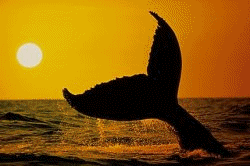
Greenpeace urgently need $50,000 to send our top activists and campaigners to Portugal next month to demand an end to Japan's lethal whaling program. With just a $5 or $10 donation YOU can join Greenpeace in ending whaling forever.
Greenpeace launched the world's first anti-whaling campaign in 1975 and, after over a decade of campaigning, Greenpeace convinced the IWC to effectively ban commercial whaling in 1986. But Japan has been abusing a loophole in the ban that allows its whalers to kill hundreds of these amazing defenseless creatures every year for so-called "scientific research." Greenpeace has exposed this as a fraud and we must not allow the slaughter to continue.

This past year, in one of the most significant developments since we won the ban on commercial whaling, Greenpeace disclosed evidence that reveals Japan's research program for what it really is: a large-scale whale meat scam. Even the IWC's Scientific Committee found that Japan has failed to reach a single one of its scientific objectives and has repeatedly asked Japan to end its hunt.
We need your support to save the whales, end the slaughter and defend our oceans - please click now and make as generous a gift as you can.
For the whales,

John Hocevar
Oceans Campaign Director
And Repost To Your Blog Or Bulletin!
Posted by Denbeath at 9:26 PM 0 comments
Labels: end whaling, Greenpeace, whaling
Dolphin Slaughter In Japan

Dolphin Slaughter in Japan.
In Japan, fishermen round up and slaughter thousands of dolphins and other small whales each year.
In the small fishing village of Taiji, entire schools of dolphins are driven into a hidden cove after a prolonged chase. Once trapped inside the cove, the fishermen kill the dolphins, slashing their throats with knives or stabbing them with spears. The water turns red with their blood, and the air fills with their screams.
This brutal massacre — the largest scale dolphin kill in the world — goes on for six months of every year. Even more scandalous, members of the international dolphin display industry take advantage of the dolphin slaughter to obtain some few, show-quality dolphins for use in captive dolphin shows and dolphin swim programs.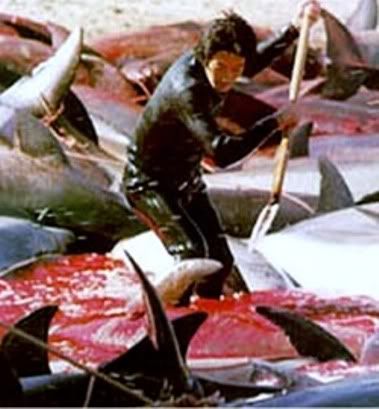
Facts about the Dolphin Slaughter.
About 23,000 dolphins, porpoises and other small whales are killed in Japan every year, making it the largest scale slaughter of cetaceans in the world.
• About 2,500 dolphins and other small whales are killed in the so-called dolphin drive hunt that takes place six months out of the year.The rest are killed with handheld harpoons out at sea.
• In the small fishing village of Taiji, Wakayama prefecture, the dolphin drive hunt is carried out by about 26 fishermen from September 1st though March.
• Operating with 13 motorized boats, the fishermen go out to sea at early sunrise and look for migrating dolphins. Banging on metal pipes submerged into the water, they terrorize the dolphins with a "wall of sound," causing the dolphins to panic.
• Terrorizing the dolphins with underwater sound, the fishermen herd the dolphins into a secret killing cove close to Taiji Town.
• Often times, dolphins die during the chase that can last eight hours or more.
• The Taiji fishermen claim that dolphins eat too much fish and therefore must be exterminated.
• Operating with a permit from their government, the Taiji fishermen have referred to the dolphin hunt as "pest control."
• The majority of people in Japan have no knowledge about the annual dolphin blood bath.
• The fishermen kill the dolphins with spears, fishermen's hooks and knives. Trashing about in their own blood, the dolphins emit high-pitched screams during the massacre.
• The slaughtered dolphins are processed into meat and distributed to supermarkets throughout Japan for human consumption.
• Dolphin meat from drive hunts in Taiji proved to be highly contaminated with toxic chemicals such as mercury, methyl mercury and PCBs.
• Repeated chemical analyses have shown that the level of mercury in dolphin meat is much higher than the maximum allowable level set by the Ministry of Health, Labor and Welfare of Japan.
• Some of the dolphin meat is given to children as part of their school lunch program.
• The Japanese government and the supermarkets issue no warning that dolphin meat is mercury-contaminated.
• The fishermen of Taiji have told us that the Japanese people have no right to know about the dolphin hunt or the high levels of mercury found in the meat.
• Concealing this information from the public is a violation of Article 21 of the Japanese Constitution.
• Some members of the international aquarium and zoo industry are strongly connected to the Japanese dolphin slaughter, in that they pay top dollar for dolphins deemed suitable for commercial exploitation in dolphin shows and captive dolphin swim programs.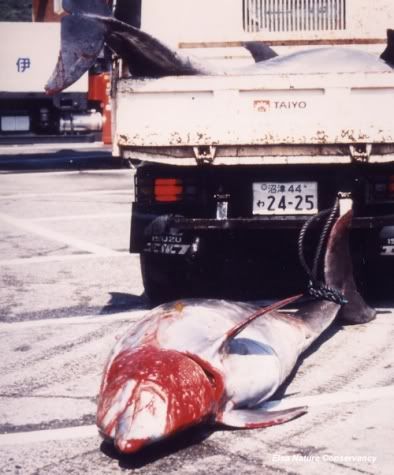
• Dolphinariums throughout the world, including Japan, repeatedly make the claim that captivity of dolphins promotes dolphin conservation and protection.
• Several of the hundreds of captive dolphins in Japan's 50 dolphinariums were obtained through the dolphin drive hunts; yet the dolphinariums do nothing to educate the public to the hunt.
• The World Association for Zoos and Aquariums (WAZA) is the world's largest network of zoos and aquariums around the world.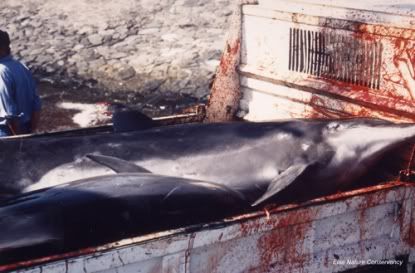
• Dolphinariums that have conducted business with the dolphin killers of Japan have been welcomed into WAZA's network, although the trade in these dolphins clearly violates WAZA's Code of Ethics.
• The dolphins that are purchased by members of the dolphin captivity industry represent a much higher commercial value to the Japanese dolphin hunters than the ones that are slaughtered for meat.
• Live dolphins captured in a Taiji dolphin drive hunt recently sold for $154,000 per dolphin.
• The Japanese dolphin hunt will continue for as long as members of the international dolphinarium industry continue to reward the hunters for show quality dolphins, thereby making the hunt tremendously profitable.
• The most sought after dolphin species for public display are bottlenose dolphins, orcas, white sided dolphins, Risso's dolphins, pilot whales and Pseudo orcas, all of which have been targeted in the Japanese dolphin drive hunt.
How You Can Help.

Click here to sign the petition to end Dolphin Slaughter in Japan
Please send a message to the Japanese Embassy, asking to stop the dolphin drive hunt and prohibit the sale of mercury-contaminated dolphin meat:
Embassy of Japan in Washington D.C.
Ambassador Ichiro Fujisaki
2520 Massachusetts Ave., N.W.
Washington D.C. 20008-2869
Tel: (202) 238-6700,
Fax: 202-328-2187
Hours: M-F 9:15-12:30 and 2:00-6:16
E-mail: jicc@embjapan.org
Web: http://www.mofa.go.jp/about/emb_cons/mofaserv.html
For more information on dolphin drive hunts, contact addreses and to see how you can help, please go to the websites below.
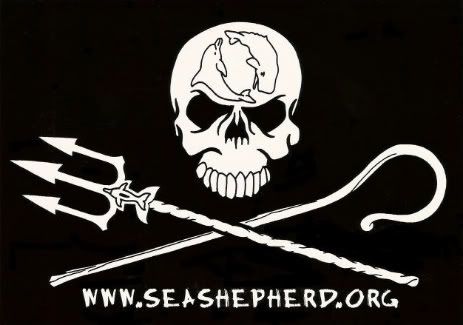
www. seashepherd. org

www. bluevoice. org
Please Repost, thanks.
Posted by Denbeath at 2:56 PM 2 comments
Labels: dolphin, dolphin slaughter, dolphins, Japan, japanese
Thursday, May 14, 2009
Jane Goodall Comments on the BC Trophy Hunt
From: Cornwalls Voice for Animals
http://www.youtube.com/watch?v=0sPK4LVAjSw
Posted by Denbeath at 8:08 AM 0 comments
Labels: bear hunting, bears, hunting, trophy hunting
Friday, May 8, 2009
Happy Cows?
Dairy Products from 'Happy Cows'. I watched a commercial today for Babybel Cheese. in the commercial a young woman with a bright, cheerful, sunny smile was on a city sidewalk handing out little rounds of mini Babybel cheese to pedestrians. At the end of the commercial she comments that Babybel is cheese from 'Happy Cows'. Babybel's logo is a picture of a cow with a big smile with the word overhead "The Laughing Cow". So in essence this dairy company is touting 'Laughing Cow products from Happy Cows'. Please read the information below and click on the links to visit the websites....I don't think these cows are very 'happy'.
http://www.goveg.com/factoryFarming_Cows_Dairy.asp
http://www.chooseveg.com/dairy.asp
Cows produce milk for the same reason that humans do—to nourish their young—but calves born on dairy farms are taken from their mothers when they are just one day old and fed milk replacers so that humans can have the milk instead.
In order to keep a steady supply of milk, the cows are repeatedly impregnated. Several times a day, dairy cows are hooked by their udders to electronic milking machines, which can cause the cows to suffer electrical shocks, painful lesions, and mastitis.
Some spend their entire lives standing on concrete floors; others are crammed into massive mud lots.
Although cows would naturally make only enough milk to meet the needs of their calves (around 16 pounds a day), genetic manipulation, antibiotics, and hormones are used to force each cow to produce more than 18,000 pounds of milk a year (an average of 50 pounds a day).
Cows on factory farms suffer from a variety of health problems including mastitis, a painful inflammation of the mammary glands. In order to further increase profits, Bovine Growth Hormone (BGH), a synthetic hormone, is now being injected into cows to get them to produce even more milk. The hormones adversely affect the cows’ health and increase the rate of birth defects in their calves. BGH may also cause breast and prostate cancer in humans.
Cows have a natural lifespan of about 25 years and can produce milk for eight or nine years, but the stress caused by factory farm conditions leads to disease, lameness, and reproductive problems that render cows worthless to the dairy industry by the time they are four or five years old, at which time they are sent to the slaughterhouse.
cruelty in a crate
Few consumers realize that veal is a direct by-product of the dairy industry. In order for dairy cows to produce milk, they must be impregnated. While female calves are slaughtered or added to the dairy herd, many male calves are taken from their mothers when they are as young as one day old and chained in tiny stalls to be raised for veal.
The confinement is so extreme that they cannot even turn around or lie down comfortably. As author John Robbins notes, “The veal calf would actually have more space if, instead of chaining him in such a stall, you stuffed him into the trunk of a subcompact car and kept him there for his entire life.”
Many veal calves are deliberately kept anemic in order to produce light-colored meat, which fetches higher prices in restaurants. Their liquid-based, iron-deficient diets cause numerous health problems.
Motherless and alone, they suffer from ulcers, diarrhea, pneumonia, and lameness. After three to 18 weeks of this deprivation, they are trucked to the slaughterhouse, where their young lives are taken from them.

Posted by Denbeath at 2:30 PM 2 comments
Labels: dairy cows, factory farms
Thursday, May 7, 2009
Parrots & The Pet Trade
Watch CBS Videos Online
There's probably no one that knows more about the pet bird industry in the US than Mira Tweti and that's why the bird breeders (all the ones that wrote that they hated the piece - that's them) are always trying to take her down. They're like the NRA for birds: They oppose every law to regulate them and abhor transparency in their practices because if the public could see what they're doing to these poor birds they'd never buy another one!
You don't need to be a rocket scientist to see the gross abuse of parrots made acceptable over human history! Well, Tweti is working to raise public awareness that it needs to stop and she has done a MAGNIFICIENT job of it.
If you want to know the truth about companion parrots do what others posted here have suggested: get Mira Tweti's books - Of Parrots and People: the Sometimes Funny, Always Fascinating, and Often Catastrophic Collision of Two Intelligent Species.
And Here, There and Everywhere, the first parrot welfare children's book lauded "a masterpiece that should be in every library, school and home," by Dr. Jane Goodall.
You can buy signed copies (and she'll inscribe them if you ask her) via www.ParrotPress.net (Mira's site,) or on Amazon or in any bookstore chain.
Of Parrots and People is an expose' on the parrot trade that reads like a detective story - you won't be able to put it down. I couldn't!
Tweti is a multi-award winning investigative journalist that has written for the Los Angeles Times, The New York Times, The Village Voice, LA Weekly, Tacoma News Tribune and man, many other newspapers and magazines! That's why CBS interviewed her - because she has done first hand reporting on these issues for more than a decade. And she had a major book published, the first of it's kind, last fall.
Her book is based on a Los Angeles Times Magazine award-winning expose' on the US parrot industry and Tweti spent five years writing the book. She did more than 500 interviews with avian biologists, accredited researchers at Harvard and other universities (not any dopey parrot owner with an opinion as you'll find here), US FIsh and Wildlife, conservationists, avian rescuers across the US, and many more.
It would be good if people had their facts straight about Mira Tweti before claiming things that have no truth in them: She did not buy her Lorikeet, Zazu. Like the CBS segment accurately reported she adopted him after her first parrot, Mango, died tragically from an infection (she got condolences from across the US and overseas).
It was Mango who raised her consciousness about the conditions of birds in many breeding facilities and that they were "parrot mills" and inhumane. She's written about this extensively since 1995 - in Bird Talk, parrotcrhonicles.com, and even the lory society journal early on, and more. It's public knowledge. She is the last person who would buy another parrot - why would anyone when there are thousands waiting to be adopted?
And why would anyone who really cared about these wonderful birds breed more when the average pet parrot has 7 homes in the first 10 years of its life!
They are passed around like old clothes to family and friends when their owners realize what a challenge it is to keep a screaming, biting, destructive wild animal in their home and worse yet - to keep a beautiful flying creature in perpetually imprisoned?
And, last but not least: if you read Mira's book you'd know that the Humane Society of the US is saying that birds relinquished by their owners to rescues, even great rescues, are not living a high quality life. They are still in cages, usually alone. Even though they're fed and kept clean, it's still no life for a flocking animal that needs trees and a life in the sky. So they're saying rather than warehouse them for decades, it's more humane to euthanize them.
It won't be an issue soon, as the numbers are increasing of unwanted parrots and there's already no places for them in rescues. They'll end up like their cat & dog counterparts: after living unhappy lives in captivity, they'll be euthanized at local SPCA's or animal control shelters as unwanted pets. And all this while their wild cousins are going extinct in the wild from the pet trade!
Posted by Denbeath at 9:44 PM 1 comments
Wednesday, May 6, 2009
Create A Bee Friendly Yard

It isn't difficult to make your yard, garden or even patio space a haven for beneficial bees. You'll be helping these important insects, as well as bringing more nature to your backdoor.
The greater the plant diversity, the more bees you will attract and support. Always try to choose as many native plants as possible, and consult with nursery staff or other experts to find vegetation that will thrive in your specific conditions.
Here is a partial list of tried-and-true bee attractors:
Annuals
Asters
Calliopsis
Clover
Marigolds
Poppies
Sunflowers
Zinnias
Perennials
Buttercups
Clematis
Cosmos
Crocuses
Dahlias
Echinacea
English Ivy
Foxglove
Geraniums
Germander
Globe Thistle
Hollyhocks
Hyacinth
Rock Cress
Roses
Sedum
Snowdrops
Squills
Tansy
Yellow Hyssop
Garden Plants
Blackberries
Cantaloupe
Cucumbers
Gourds
Peppers
Pumpkins
Raspberries
Squash
Strawberries
Watermelons
Wild Garlic
Herbs
Bee Balm
Borage
Catnip
Coriander/Cilantro
Fennel
Lavender
Mints
Rosemary
Sage
Thyme
Shrubs
Blueberry
Butterfly Bush
Button Bush
Honeysuckle
Indigo
Privet
Trees
Alder
American Holly
Basswood
Black Gum
Black Locust
Buckeyes
Catalpa
Eastern Redbud
Fruit Trees (especially Crabapples)
Golden Rain Tree
Hawthorns
Hazels
Linden
Magnolia
Maples
Mountain Ash
Sycamore
Tulip
Poplar
Willows
_________________________________
Few of us are likely to don netting and surround our homes with hives. But there are many things we can all easily do to help our beleaguered bees.
http://www.pollinatorparadise.com/solitary_bees/beegarden.htm
Posted by Denbeath at 7:02 PM 0 comments
The EU Ban on Seal Products
I received this email response this morning:
_________________________________
Dear Madam,
You recently urged me to support the ban on trade in seal products.
I am glad to announce you that the ban on trade in seal products has been adopted today by 550 votes in favour, 49 against and 41 abstentions. I was one of the 550 pro votes.
The alternative proposals by the UEN on "wild animals" and on the authorisation to kill seals without "useless pains or suffering" has been rejected by 435 votes (174 in favour).
From 6 May onwards you will be able to find the adopted text on:
http://www.europarl.europa.eu/activities/plenary/ta.do?language=EN
Kind regards,
Bart Staes
MEP (European Greens)
www.bartstaes.eu
PRESS RELEASE - Strasbourg, 5 May 2009
Seal trade ban
Greens welcome EU Parliament vote for seal trade ban
Today in the European Parliament's plenary session, an overwhelming majority of MEPs voted in favour of a ban on the commercial trade of seal products in the EU. (1)
Caroline Lucas, Vice-Chair of the European Parliament intergroup on animal protection and co-sponsor of a EP written declaration against the trade in seal products in 2006, commented:
"I am delighted that Parliament has voted to ban the trade of seal products. By closing the door on fur and other seal products, Parliament has taken meaningful action to reduce the scale of cruel commercial seal killing across the world.
The result pays tribute to the determination of all who persisted in demanding a ban when others said it was impossible. It goes to show that it is possible to galvanise political will and achieve positive results with the support of NGOs and the overwhelming balance of public opinion.
Today's vote marks a clear rejection of the draftswoman Diana Wallis' approach. She was clearly out of step with public opinion and political will by calling for a label on seal products instead of a ban."
Carl Schlyter, Vice-Chair of the European Parliament intergroup on animal protection, added:
"I hope that the ban on the trade in seal products will save save hundreds of thousands of seals from being clubbed and shot under cruel conditions in Canada and elsewhere.
Parliament's vote is a victory against cruelty and a setback for the Swedish government which shamelessly presented itself as the EU's most stubborn opponent of the ban."
*** ENDS***
Notes to editors:
(1) 550 votes in favour, 49 against, 41 abstentions.
--------------------------------------------------------------------------------
From: Patricia McCauley-Najafabadi [mailto:p.najafabadi@gmail.com]
Sent: 01 April 2008 08:08
To: FORD Glyn; HUDGHTON Ian; JACKSON Caroline; KAMALL Syed; KARIM Sajjad; LUCAS Caroline; MCAVAN Linda; MORGAN Eluned; PARISH Neil; struanmep@aol.com; BREPOELS Frieda; BUSQUIN Philippe; RIES Frédérique; DEPREZ Gerard; DUQUESNE Antoine; LANGENDRIES Raymond; STAES Bart; THYSSEN Marianne; BUSK Niels; CHRISTENSEN Ole; JØRGENSEN Dan
Subject: Seal Hunt
Dear Sir or Madam,
I am asking you to please convey my concerns to the European Parliament with a request that the members vote to protect the seal by banning all seal products into European markets.
Sealing has no place in the 21st century. It is barbaric, uncivilized and unbelievable cruel.
The Canadian government is trying to convince the Parliament that the seals being killed are all adults when in fact they are not. This is because the government of Canada defines an “adult” seal as any seal over three weeks of age. This is deceptive terminology.
The Canadian government claims the hunt is 'humane'. If the hunt is “humane” as the Canadian government insists it is then why is it illegal to observe the killing of a seal (yes, that's right, they have actually made a law that you are not allowed to take a picture of or video or even see a sealer within range of killing a seal. I thank God that some Seal Defenders managed to get film footage in spite if it. Seal pups have been filmed suffering in agony on the ice after being clubbed, stabbed, shot or kicked by sealers !
The harps seals are also being threatened by global warming which is causing loss of ice habitat and this is not factored into the quota decisions of the government.
The government of Canada tries to link the seal hunt with aboriginal communities despite the fact that the commercial hunt is not an aboriginal hunt. No one is opposing Inuit sealing in the far north. The opposition is to the mass slaughter in Eastern Canada especially Newfoundland where the aboriginal peoples were exterminated a century ago. There are no native communities in Newfoundland.
The Canadian Department of Fisheries and Oceans has a record of incompetence with regard to management of the fisheries.
Every single commercial fishery in Canada is in trouble because of DFO mismanagement
Thank you Dear Sir for reading this.
Sincerely,
Patricia McCauley-Najafabadi
xxxxxx Street
Pittsburgh, PA. 15xxx
Phone: xxx-xxx-3810
Posted by Denbeath at 10:31 AM 0 comments
Sunday, May 3, 2009
60 Minutes: Why Are Honeybees Disappearing?
Posted by Denbeath at 9:38 PM 1 comments
Labels: honeybees
Saturday, May 2, 2009
To be an Eco-Terrorist Now, You Just Gotta Flap your Jaw
UPDATE: Five of 11 Massey protesters found in contempt of court, based on a pretty outrageous interpretation of restraining orders.
To be an eco-terrorist now you just gotta flap your jaw
And hey who knows by the time you have a chance to blink
Whether you’re a criminal might depend on what you think
Sometimes in the new era of “hope” and “change,” you almost forget the way 
things work in the rest of the world. In West Virginia and Indiana, environmental activists using tools like non-violent direct action and grassroots organizing are facing corrupt legal systems that are misusing existing laws to stop their campaign activities.
In West Virginia today (May 1), 8 activists and 3 journalists are set to appear before a state court to show why should not be held in contempt for violating a Temporary Restraining Order (TRO) brought by four Massey Energy subsidiaries. Massey Energy says that the activists engaged in three direct actions since February in the Coal River Valley stopping daily work are a violation of the TRO. Only one of the 11 is actually listed on the TRO and he hasn’t participated in any action since it was served.
The activists contend that the TRO is overly broad as it extends to “all other persons allied, associated, confederating, conspiring, or acting in concert with them.” In other words, it extends to all of us that oppose Massey’s rape of Coal River Mountain.
Massey also wants compensatory damages and all defendants to be jailed until they agree to never violate the TRO again.
Things are only going to heat up in the Coal River Valley as Climate Ground Zero and Mountain Justice are preparing for a summer of action against Massey.
 Late last week in Indiana, two organizers with Roadblock Earth First! were charged with rackateering (a law used to target the mafia), for allegedly conspiring to engage in tree-sits, civil disobedience and blog posts.
Late last week in Indiana, two organizers with Roadblock Earth First! were charged with rackateering (a law used to target the mafia), for allegedly conspiring to engage in tree-sits, civil disobedience and blog posts.
Hugh Farrell and Gina “Tiga” Wertz have been organizing a campaign to halt the expansion of the I-69 NAFTA Superhighway. They were arrested and charged with five charges which could lead to eight years in prison.
On Greenisthenewred.org, Will Potter writes:
“Racketeering laws are intended to combat organized crime, such as the mafia, and include crimes like extortion, bribery and money laundering. Although ambitious prosecutors have tried to use the Racketeer Influenced and Corrupt Organizations Act (RICO) to target anti-abortion activists, animal rights activists, and the Hells Angels, the purpose of the law has always been to go after illegal business activity.”
Now the prosecutors are extending it to Earth First! basically for their beliefs.
In both cases, a corrupt legal system is attempting to mis-use laws to silence our dissent.
Posted by Denbeath at 10:02 PM 0 comments
Friday, May 1, 2009
Agri-biz at root of swine flu?
More at http://therealnews.com/t/in... Evidence points to industrial pig farm as source of outbreak, if so, Bernice Wuethrich tried to warn us
The Real News
Posted by Denbeath at 8:42 PM 1 comments
Quote of The Day
If man could be crossed with the cat,
Posted by Denbeath at 5:11 PM 0 comments
Teens arrested for setting two dogs on fire in Texas
Posted by Denbeath at 12:57 PM 0 comments
Steer Busting; The most deadly rodeo event
Steer Busting;
The most deadly rodeo event
Reposted with thanks to: : SHARK
SHARK exposes the deadly cruelty of rodeo steer busting, sanctioned by the Professional Rodeo Cowboys Association (PRCA).
___________________________________________________________
www.BustSteerBusting.com
www.TheCruelTruth.com
www.SHARKonline.org
Posted by Denbeath at 8:59 AM 0 comments
Labels: animal abuse, Animal Cruelty, rodeo, steer, steer busting

